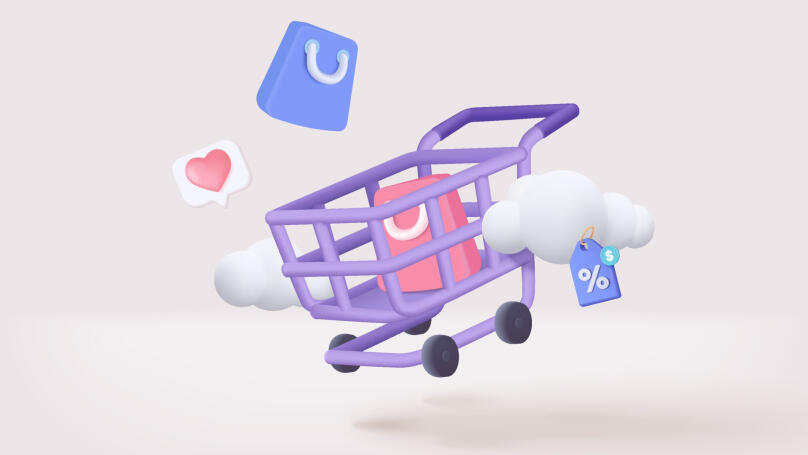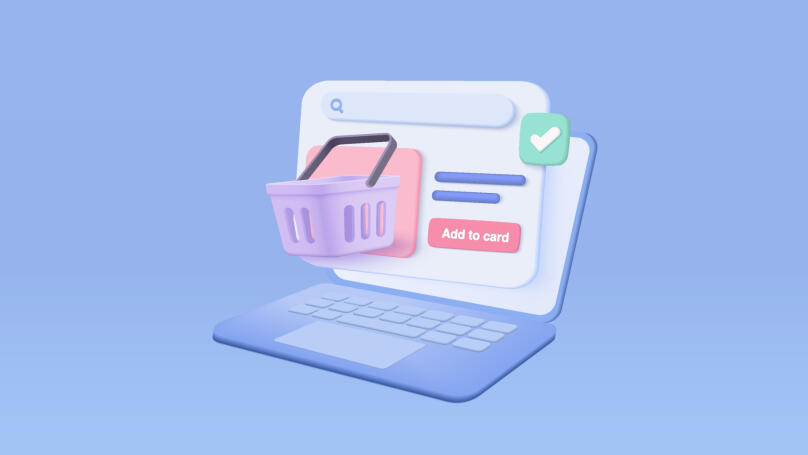SNAP Selling

What is SNAP Selling?
The SNAP technique is a special method of selling where the salesperson must be on the same level as the potential customer. In other words, they must try to walk in their shoes to know how the consumer decides to buy or refuse a product. The SNAP sales technique allows you to determine how the consumer thinks and what path they take from identifying the need for something to its satisfaction through purchasing a particular product or service.
Jill Konrath is a revered sales expert who developed the SNAP methodology. In the 2000s, she studied the sales market and concluded that today, companies deal with consumers suffering from the so-called "exhausted, or tired, customer syndrome." It means that in most cases, today's consumers make purchases unconsciously, as they are distracted by many other tasks and projects, work responsibilities and so on. Such shoppers are very busy, demanding, and impatient. They are not willing to be distracted by obscure or inconvenient products that will take up much of their time. That is why another researcher and recognised expert on sales effectiveness development - Illig Randy, believes modern companies should no longer ask, "What can I sell?" but "How do I serve the customer properly?" Indeed, today's consumers need to be provided with the best possible solution to their problems as quickly as possible. It is what the SNAP selling technique, first described in 2012 in the book "SNAP Selling: Speed Up Sales and Win More Business with Today's Frazzled Customers" by Jill Konrath, allows to achieve.
According to the researcher, the SNAP methodology is a cure for the overabundance of information and a way to interact with today's consumers tired of the variety of offers. Therefore, the most essential feature of the SNAP technique is its focus, first, on customers and their needs.
Four Basics of SNAP Selling
SNAP is an acronym that consists of four fundamental principles of the sales methodology:
- S - Simple, or "Keep it Simple." This sales technique assumes the simplest and clearest possible solution to the consumer's problem. Products should be easy to use and not cause additional questions, doubts, and uncertainty about using them. Often, it is the comfort and simplicity of the product that customers pay attention to first. Therefore, avoid complications in using your products, buying goods, making deals with customers, etc. Strive for simplicity and convenience!
- N - iNvaluable, or "Be invaluable." This principle emphasises that any offer, product, or service should be unique and valuable to the customer. Of course, it is almost impossible to avoid competition today, so retaining customers is becoming increasingly challenging. Nevertheless, according to the SNAP technique, it is necessary to emphasise the relevance, exclusivity, and uniqueness of your goods or services to potential customers.
- A - Align, or "Match", means matching the product with customers' needs, wants, and capabilities is essential. To do this, the salesperson must determine their potential customer's goals and offer them the most optimal solution that fulfils the consumer request.
- P - Priorities, or "Raise Priority." That is, it is necessary to constantly raise the priority of the offered product or service in parallel with the way the needs of potential customers change and transform.
It is these basic principles that form the foundation of SNAP selling. Thus, the technique makes it possible to increase sales efficiency while facilitating interaction with customers and developing long-term trusting relationships with them.
Three Decisions of the SNAP Technique

According to the author of the SNAP selling methodology, Jill Konrath, consumers make three intermediate decisions before making a final choice in favour of buying or rejecting a particular product.
1. Allow Access or Permission
It is the first decision the consumer makes because they decide whether they want to learn about your company or its particular product, whether they need it, and if they are willing to spend their time. At the first stage of a critical buying decision, the company needs to utilise different channels of communication and connection with the potential customer to interest them. It should provide helpful information and encourage them to move on to the next stage as soon as possible.
2. Initiate Change or Change Management
You can also refer to this decision as rejecting the status quo. When the consumer has made the first favourable decision and is interested in the company's products, it is up to the consumer to determine whether they are ready to change the current situation and make a purchase or prefer to leave things as they are. For example, a consumer has been buying an identical product from a particular company for several years. However, suddenly, they are interested in another manufacturer. Then, they face a second choice: to change an ingrained habit or refuse any innovations. At this stage, it is imperative to keep in touch with the potential customer and convince them that your product is worth the effort and cost.
3. Select Resources or Change Resources
This is the last decision a customer makes before purchasing a product. The third step involves convincing the customer that they have made the right choice. In this case, the company's goal is to confirm this and convince the customer that their decision is correct. Additionally, it is essential to provide concrete evidence that this is indeed the case. In this case, the seller's competence and developed skills are critical for successful sales.
Key Terms of SNAP Selling Method
However, the SNAP selling technique does not apply to all companies. For it to bring the most effective results, it is best to use SNAP in the B2C sector, i.e., in a business model that involves the sale of goods or services to end consumers and individuals.
The SNAP technique is also an optimal choice for manufacturers of goods that can be quickly modified depending on the customer's demands and needs. For example, a large-scale manufacturing company with a detailed and well-defined product development technology will find it challenging to use the SNAP selling methodology. However, a company that creates new mobile applications and software can quickly implement the SNAP technique. With its help, software developers will be able not only to correct faults and errors promptly but also to change the interface, refine the design, and add new features, focusing on the interests and desires of users. Moreover, it is important to remember that the essential goal is comfort, simplicity, and ease of use. For example, the American holding Meta Platforms, which includes popular messengers and social platforms Facebook, Instagram, WhatsApp, et al., competently uses the SNAP methodology to release improved versions of its products, add new convenient tools, and update the interface.
You can observe the same in the service sector, where the SNAP methodology attracts customers and builds long-term relationships with them thanks to the ability to study each customer's behaviour, wishes, interests, and opportunities. In any case, a company using the SNAP selling technique requires flexibility, mobility, and the ability to quickly respond to changing requirements for the product, the desires of potential customers and other external circumstances.
The Benefits of the SNAP Selling Methodology

The SNAP selling methodology will bring the following significant benefits to the business sphere for which it is most relevant:
- Improving customer experience and attracting new audiences - SNAP selling implies maximum convenience and comfort of customers, as well as the satisfaction of their essential needs and desires, resulting in long-lasting and trusting relationships;
- Optimising planning and analytical processes - this technique provides additional opportunities to collect and analyse data on the interests of potential audiences and directly on sales. It enables you to obtain valuable information about the popularity and demand for the products offered, the effectiveness of advertising campaigns and so on;
- Interactivity - the SNAP methodology also implies the creation of such advertising campaigns that promote the involvement of the audience and its participation in various promotions, events, contests, and quests;
- Flexibility and Mobility - the SNAP technique allows one to react quickly to unexpected changes in the market, to adjust to different requirements for the product, and to minimise the risks associated with the possible lack of demand or irrelevance of the product;
- Minimal Costs - the methodology does not require additional costs, equipment purchase, installation of special programmes, etc. All that is necessary is competent and experienced sales managers and the desire to meet all the customer's needs.
Thanks to all its advantages, the SNAP methodology allows you to significantly increase sales efficiency, improve customer experience and optimise many business processes.
SNAP Selling vs. SPIN Selling

SPIN selling is another technique that primarily involves communicating with potential customers. First developed in the 1980s, it appeared much earlier than the SNAP methodology.
The SPIN technique is focused on large deals, the peculiarity of which is that they require some meetings and negotiations to close. The acronym SPIN stands for the names of the questions:
- S - Situation or situational questions that elucidate the current situation and background circumstances;
- P - Problem or problem questions that identify the key problems of the customer and the reasons for their dissatisfaction;
- I - Implication or extractive questions, which can also be called clarifying questions. They demonstrate the implications of the problems identified;
- N - Need-Payoff, or guiding questions, show the customer the value of your solution and convince them that they have made the right choice.
So, in a nutshell, the SPIN methodology is built on educated questions and proper communication with customers, so its key objective is to find the most favourable solution for both parties and close the deal. You achieve this goal through negotiation, using the four blocks of questions above. Simultaneously, the SNAP technology is more about satisfying the needs and desires of the customer, awareness of purchasing certain goods and building a loyal audience. Therefore, SNAP is not only about negotiations, competent communication with customers and the desire to complete the deal as soon as possible, but also about studying consumer behaviour and their pain points.
Conclusion
The SNAP sales technique is an effective tool for business promotion and development. It allows not only to improve sales results but also to optimise interaction processes with potential customers by identifying their needs and studying their financial habits and opportunities. However, adapting the SNAP methodology to each specific company or product line is essential to achieve maximum results.























